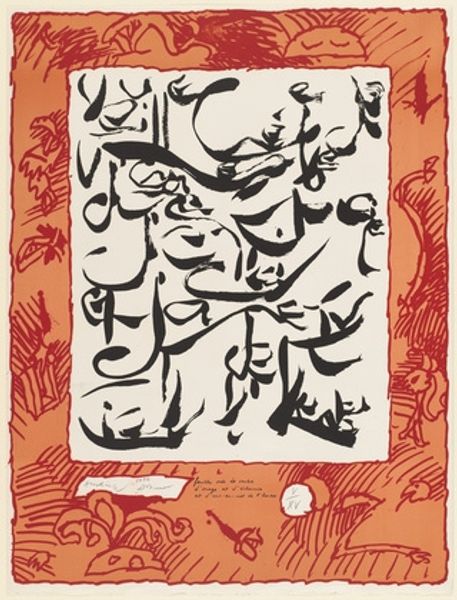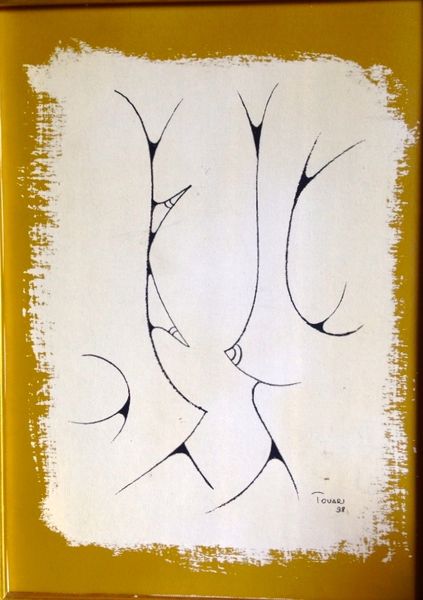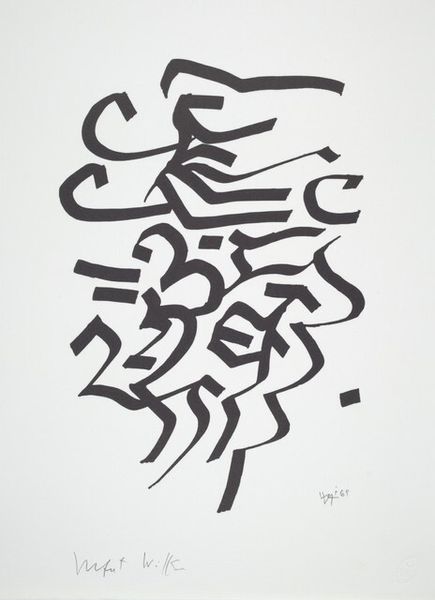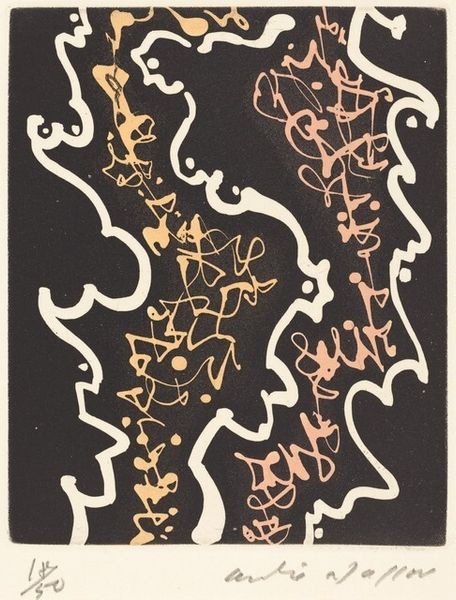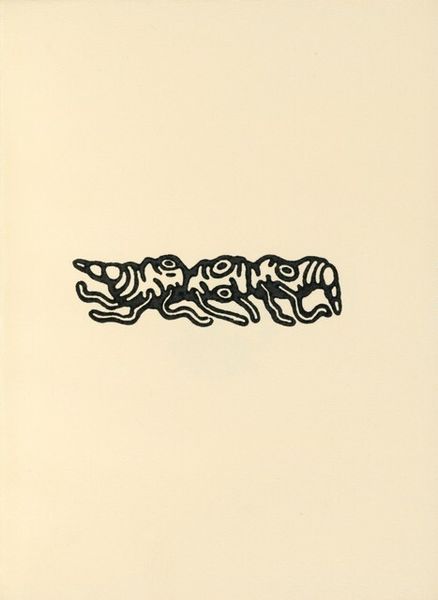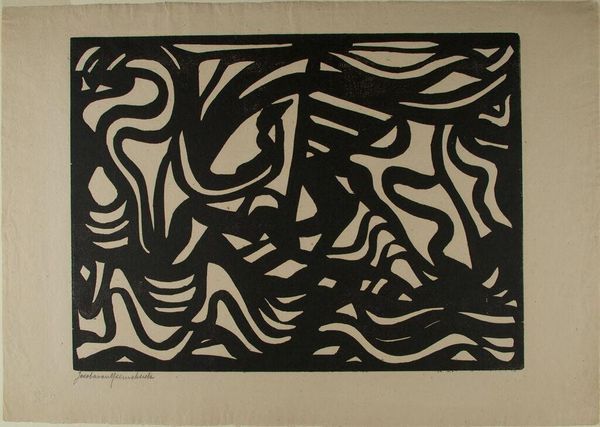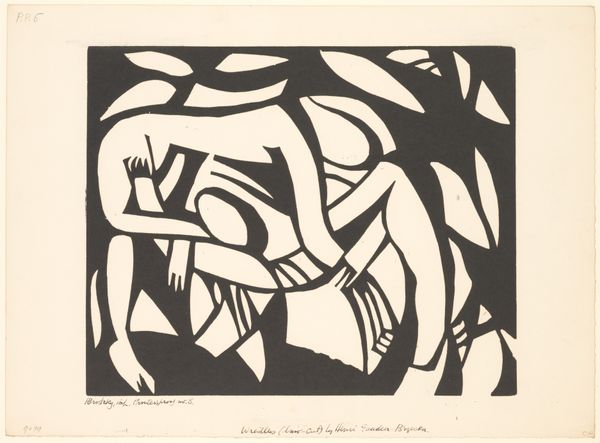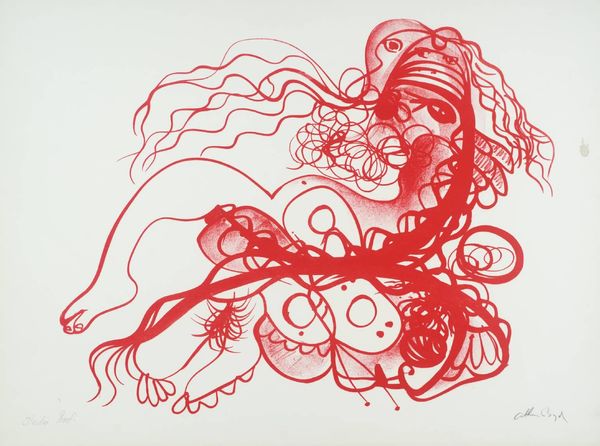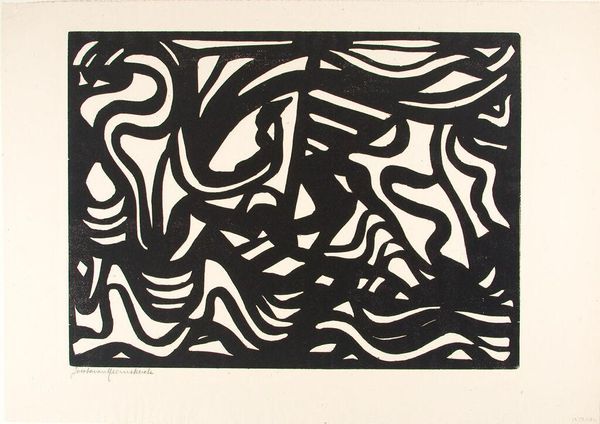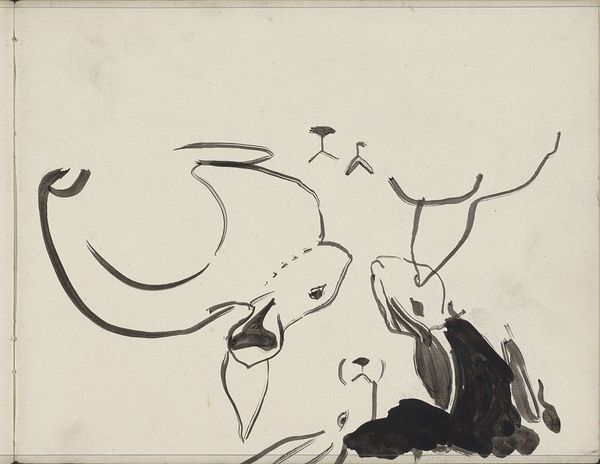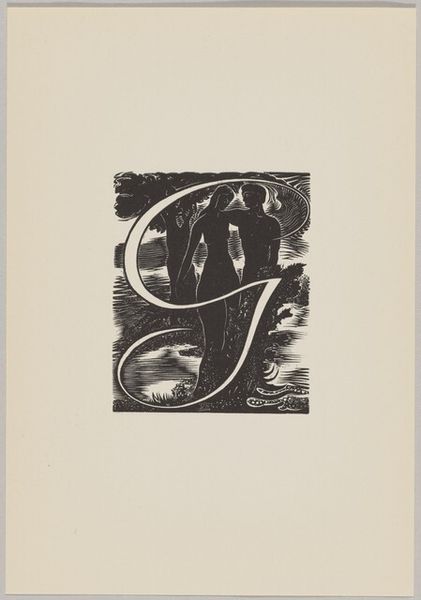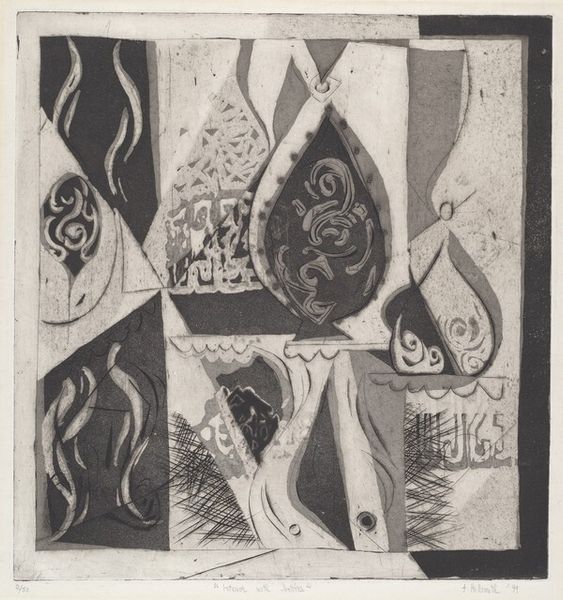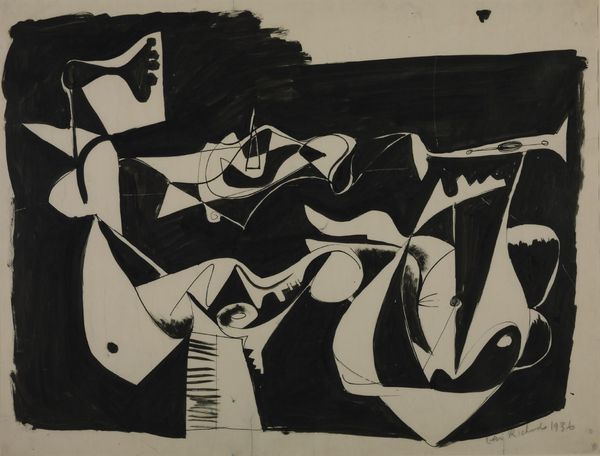![[no title] by Christian Dotremont](/_next/image?url=https%3A%2F%2Fd2w8kbdekdi1gv.cloudfront.net%2FeyJidWNrZXQiOiAiYXJ0ZXJhLWltYWdlcy1idWNrZXQiLCAia2V5IjogImFydHdvcmtzLzk4YjFkMmEwLTEzZDMtNGEyNy05YjBkLThkYWQ2NWYwMDllZC85OGIxZDJhMC0xM2QzLTRhMjctOWIwZC04ZGFkNjVmMDA5ZWRfZnVsbC5qcGciLCAiZWRpdHMiOiB7InJlc2l6ZSI6IHsid2lkdGgiOiAxOTIwLCAiaGVpZ2h0IjogMTkyMCwgImZpdCI6ICJpbnNpZGUifX19&w=3840&q=75)
Dimensions: image: 492 x 733 mm
Copyright: © DACS, 2014 | CC-BY-NC-ND 4.0 DEED, Photo: Tate
Editor: This untitled work is by Christian Dotremont, and it's at the Tate Modern. The sweeping black lines remind me of calligraphy. What do you see in this piece? Curator: Indeed, the calligraphic gesture is paramount. Note how the interplay of positive and negative space dictates the rhythm. The thick, gestural strokes contrasted with the stark white ground create a dynamic tension. Editor: So, it’s the visual elements themselves that create meaning? Curator: Precisely. It’s about the formal relationships, the visual poetics of line and form, and how those elements communicate on a purely visual level. It's less about deciphering a message and more about experiencing a visual event. Editor: I see it now. It's less about what it represents and more about how it makes you feel through its composition.
Comments
tatemodern 8 months ago
⋮
http://www.tate.org.uk/art/artworks/dotremont-no-title-p03247
Join the conversation
Join millions of artists and users on Artera today and experience the ultimate creative platform.
tatemodern 8 months ago
⋮
This work reflects Dotremont’s interest in the relationship between written language and visual arts. In the 1950s, he created word paintings with Pierre Alechinsky, who was also part of the CoBrA group. It exemplifies his style of ‘logograms’ or drawings meant to achieve the ‘unity of verbal-graphic inspiration’. These freely drawn poems are divorced from the need for readability or legibility of writing. He looked to Sumerian, Japanese, Arabic, and Indian scripts to balance drawing and writing. The bottom right corner of the page features a poem, while the rest of the space is dedicated to the visual counterpart of the text. Gallery label, March 2025
